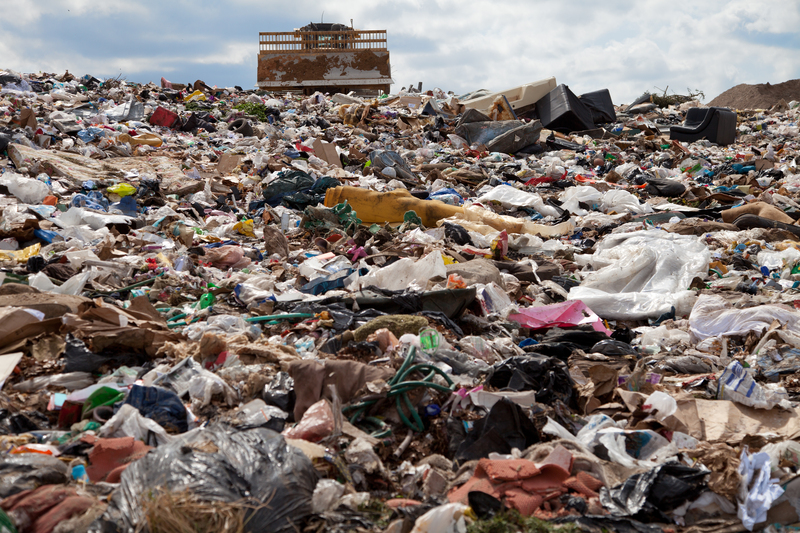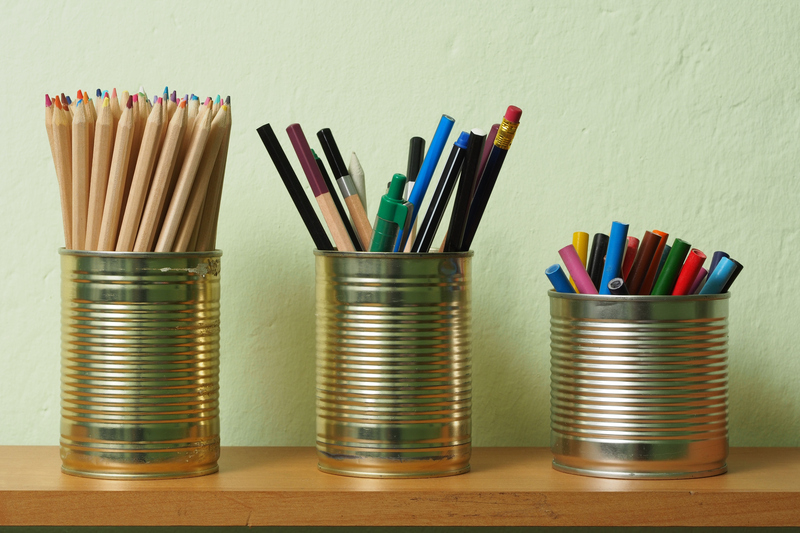How to Prep Your Old Cookware for Safe and Effective Recycling
Is your cabinet cluttered with battered pans and scarred pots? Upgrading your kitchen gear often leads to the familiar dilemma of what do with old cookware. Thoughtlessly discarding these kitchen items can be wasteful and environmentally unfriendly. Thankfully, there's a better way. Recycling old cookware not only declutters your home but also contributes to a greener planet. Before tossing your antique saucepan into the blue bin, however, it's essential to prepare old cookware for recycling correctly. In this comprehensive guide, we'll explore the best methods to ensure your kitchen castoffs are responsibly recycled--and we'll show you how to make the process as easy as possible.
Why Recycling Cookware Matters
Each year, millions of pans, pots, and baking trays end up in landfills--adding to the ever-growing problem of waste management. Most old cookware is made from recyclable materials like aluminum, iron, steel, and sometimes copper. When properly recycled, these metals can be turned into new products, conserving natural resources and reducing pollution. Recycling your cookware is a small step with a big environmental impact.
Environmental Impact
- Reduces landfill waste: Metal items do not decompose and remain in landfills indefinitely.
- Conserves resources: Recycling metals saves ore and significant amounts of energy used in mining.
- Minimizes pollution: It produces less air and water pollution compared to manufacturing from raw materials.
Personal Benefits
- Declutters your home: Free up valuable kitchen space.
- May yield small returns: Some scrap yards or metal recyclers pay for scrap metal.
- Community contribution: You'll help foster a sustainable lifestyle in your community.

Which Types of Old Cookware Can Be Recycled?
Not all cookware is created equal when it comes to recycling. Knowing what you can recycle is the first step in preparing your old cookware for safe recycling.
Metal Cookware
- Aluminum pots and pans: Usually recyclable, except nonstick coatings.
- Stainless steel cookware: Highly recyclable and accepted by most facilities.
- Cast iron: Can be recycled but may need special handling due to weight and size.
- Copper cookware: Valued at scrap yards; often easily recyclable.
Non-Recyclable or Specially Handled Items
- Nonstick (Teflon) pans: Most curbside programs do not accept these unless coating is removed.
- Glass cookware (Pyrex, tempered glass): Cannot be recycled with standard glass bottles/jars.
- Ceramic cookware: Usually not accepted in curbside recycling but may have special drop-off programs.
Always check with your local recycling facility's guidelines for specific instructions.
Steps to Prepare Your Old Cookware for Recycling
Properly preparing used cookware for recycling ensures it is handled correctly and safely upon arrival at the recycling center. Let's break down the entire process.
Step 1: Identify the Material
Examine your cookware for labels, stamps, or distinctive coloring. Aluminum is lightweight and often shiny. Stainless steel tends to be heavier with a silvery luster. Cast iron is dense and dark. Copper pans have a reddish or orange tint. Sorting by material type makes drop-off and processing much more efficient.
Step 2: Remove Non-Metal Parts
Most old pans and pots have plastic, wooden, or rubber handles; sometimes there are glass lids or non-metal knobs. Before recycling:
- Detach all removable parts: Use a screwdriver or pliers as necessary.
- Discard or separately recycle non-metal components such as handles and knobs.
- Check if glass lids are recyclable: Pyrex or tempered glass should be taken to special collection points, not in curbside bins.
Removing non-metal elements ensures the recycling process is not contaminated and improves efficiency.
Step 3: Clean Your Cookware
Old food residue, grease, or burnt-on bits can hamper recycling operations. Give your recyclable cookware a thorough wash and scrub:
- Remove stuck-on grime or rust with steel wool or baking soda and vinegar solutions.
- Rinse thoroughly and let dry before transporting.
While the recycling process can handle some dirt, extreme build-up may cause rejections at smaller facilities.
Step 4: Dismantle and Separate by Type
If you have a variety of cookware types or mixed-metal pieces, group all similar items together to streamline handling. Label or keep copper, aluminum, and steel separate since many recycling centers use different bins for each metal.
Step 5: Remove Nonstick Coating (If Possible)
Standard Teflon-type nonstick coatings are problematic for recycling facilities. If feasible, you can try:
- Sanding down or scraping off coatings with steel wool, sandpaper, or wire brushes.
- Cut out the nonstick layer (only if safe and practical).
Most facilities recommend simply discarding the nonstick cookware in regular waste if the coating is not removable. However, some specialty metal recyclers can accept Teflon-coated pans. Always call ahead!
Step 6: Research Where to Recycle
Not all curbside bins can accept old cookware. Consider the following options for recycling your prepped cookware:
- Local municipal recycling centers: Some accept scrap metal; check their accepted materials list.
- Specialty scrap metal recyclers: Often pay by weight and accept a wide range of metals--even larger or broken cookware.
- Household hazardous waste days: Some municipalities offer annual pick-up or drop-off events.
- Big-box retailers or cookware stores: Some have take-back or recycling programs for old cookware.
- Donation centers (if still functional): Goodwill, thrift stores, or community organizations may accept gently used pans and pots.
Alternative Ways to Repurpose Old Cookware
If your cookware isn't accepted for recycling, or you'd like a creative challenge, think about repurposing. Upcycled cookware can serve as unique planters, organizers, or quirky garden art.
- Planters: Drill drainage holes and plant herbs or flowers.
- Organizers: Use muffin tins for desk or craft supplies.
- Garden decor: Old pans or lids can become birdbaths or whimsical yard ornaments.
- Pet feeding dishes: Stainless steel pans serve as easy-to-clean pet bowls.
Repurposing is both eco-friendly and fun!
What to Avoid When Recycling Old Cookware
Recycling facilities operate on strict protocols. Here's what not to do when recycling old kitchenware:
- Don't toss non-metal cookware into the metal bin.
- Never hide hazardous materials (like batteries from electric skillets) in loads of cookware.
- Avoid leaving on rubber or wooden handles.
- Don't transport dirty or greasy pans--most centers require items to be clean.
- Never combine various metals in the same recycling bag unless your recycler accepts mixed loads.

Frequently Asked Questions About Old Cookware Recycling
Can You Recycle Nonstick Cookware?
Most municipal programs do not accept nonstick pans unless the coating is removed. Some specialized scrappers may take them if labeled, but it's best to call ahead and confirm.
Are Glass Baking Dishes (Pyrex) Recyclable?
No. Pyrex and other tempered glass items have different chemical compositions than bottle or jar glass, so they must be taken to specialty glass recyclers or disposed of in regular trash, unless your local center offers a dedicated collection.
Should I Donate My Old Cookware Instead?
If your cookware remains functional, donating is an excellent choice. Many local shelters, thrift shops, and nonprofits welcome these items, provided they are in usable condition and fully cleaned.
Is It Safe to Remove Handles and Parts Myself?
In most cases, yes. Use appropriate tools and caution, especially if screws or rivets are rusty. If you can't safely remove non-metal parts, mention this to your recycling center--they may have equipment to help.
Conclusion: Give Your Old Cookware a New Life
By prepping your old cookware for safe and effective recycling, you demonstrate both environmental responsibility and care for your local ecosystem. Recycling used cookware doesn't just free up kitchen space--it helps conserve resources and reduce landfill waste. By following these simple steps--sorting, cleaning, disassembling, and confirming drop-off locations--you ensure your pots, pans, and trays have a responsible afterlife. For cookware that isn't eligible for recycling, consider alternative uses or donation. Every pan you recycle keeps metals in circulation and out of the trash, so take the extra step for the planet--your kitchen (and the Earth) will thank you!